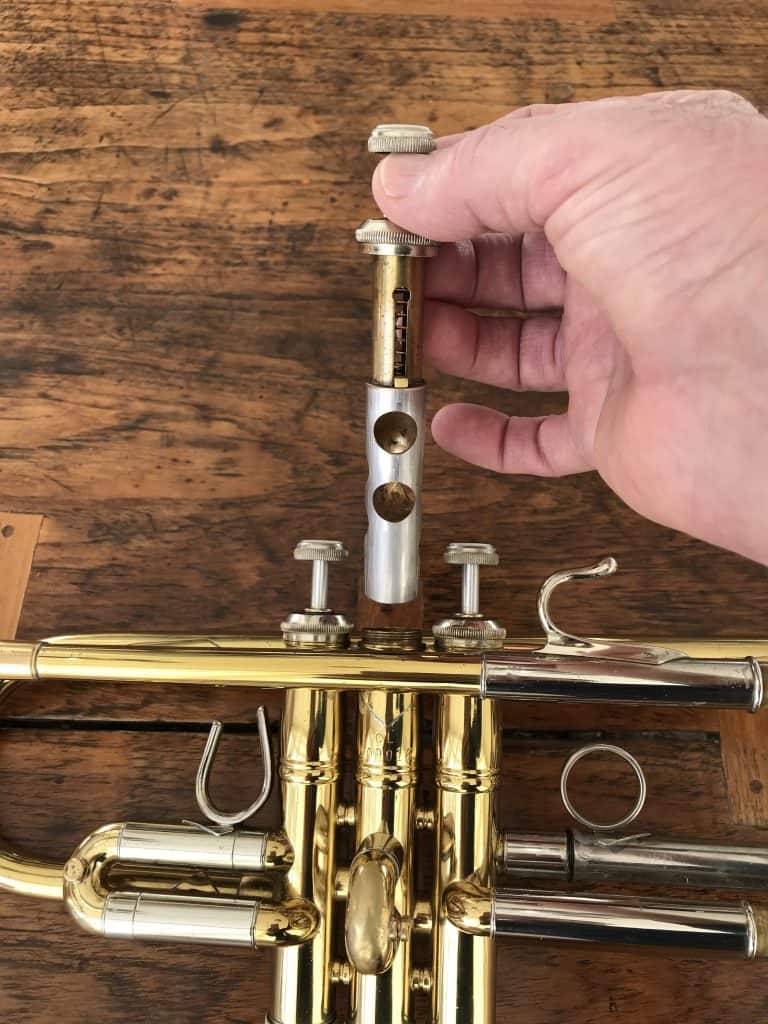My trumpet is “clogged” and won’t blow. What should I do?
A trumpet can sometimes not produce sound due to one of two reasons: something is blocking the airflow inside the instrument, or the valves are in the wrong position.
If something is blocking the airflow, it can be caused by dirt, moisture, or other debris that has accumulated inside the trumpet. To correct this issue, you can disassemble the trumpet and clean it thoroughly. Make sure to clean each part, including the mouthpiece, valve casings, and leadpipe, using a soft cloth or cleaning snake.
If the valves are in the wrong position, it can cause the trumpet to not produce sound or produce an incorrect pitch. This can happen if the valve is not aligned correctly or if it is not fully seated in the valve casing. To correct this issue, you can disassemble the valve and align it correctly. To seat the valve, simply push it firmly into the valve casing. You may need to repeat this process several times to fully seat the valve.
The small plastic guide on a trumpet valve helps to align the valve in the correct position to allow air to flow. This guide is called a valve guide and it sits on top of the valve casing and helps to guide the valve into the correct position when it is depressed.
In order for the valve to be in the right position to allow air flow, the valve guide must be aligned properly. If the guide is not aligned correctly, the valve may be slightly offset, causing the air to not flow through the trumpet correctly, or causing an incorrect pitch to be produced.
To align the valve guide, the trumpet should be disassembled and the valve removed. The valve guide should be checked to make sure it is seated correctly on the valve casing and that it is not bent or damaged in any way. If the guide is not in the correct position, it can be gently pushed back into place or re-aligned as needed.
Once the valve guide is correctly aligned, the valve should be re-inserted and checked to make sure it moves smoothly and seats correctly in the valve casing. If the valve is still not working correctly, further adjustment or repair may be needed.
It’s important to take care of your trumpet and regularly clean it to ensure it’s working correctly and producing the best possible sound. If you’re unsure how to clean or fix your trumpet, it’s always best to consult with a professional or a musical instrument repair specialist.
